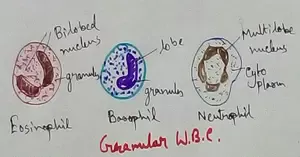Division of a Decimal by a Decimal
This topic discusses about division of a decimal number by another decimal number. we have done with division of decimal by whole number or by multiples. Now in this content we will learn about division of decimal by another decimal number.
Here are certain rules of division of decimal by another decimal number:
I: First we need to calculate the no. of places after the decimal in the divisor.
II: With as many places in the divisor we will decide whether to divide by 10, 100 or 1000 or more.
III. So we divide both the number by 10, 100 or 1000 accordingly to remove the decimal point.
For example:
63.9 ÷ 7.1
Solution:
63.9 ÷ 7.1
There is one place after the decimal point in both the divisor and the dividend so we will divide the number by 10
= 639/10 ÷ 71/10
As we have learnt in other subtopics while dividing a fraction by another fraction is that a fraction is multiplied by the reciprocal of another fraction likewise we will do so
= 639/10 × 10/71
= (639 × 10) / (10 × 71)
On changing it into lowest terms we get,
= 639/71
Now in the normal process of division we will divide both the numbers
Now here 71 multiplied by 9 is 639.
So answer is 9
Therefore, 63.9 ÷ 7.1 = 9
Here in the above examples we could see that there was equal number of places after the decimal point in the dividend and the divisor. But there may be instances when there will be not equal number of places in both the dividend and the divisor.
We will see another example where there is not equal no. of places after the decimal point in the dividend and the divisor.
0.667 ÷ 2.9
Solution:
0.667 ÷ 2.9
Here we can see that in the divisor there is 1 place after the decimal point whereas, in the dividend there are 3 places after the decimal point.
The number of decimal digit in the divisor is 1 so; we will move the decimal point 1 place both in the dividend and divisor. So, we get,
6.67 ÷ 29
Hence now, there is no decimal point in the divisor and hence we can perform the division in the same way as we do division of decimal fraction by a whole number
Here in this division we can see that when we are considering the first digit of the dividend that is 6 we cannot divide as 6 is less than the divisor 29 so we need to consider two digits of the dividend that is 66. Now 29 multiplied by 2 is 58. As the division cannot be done with the first digit of the dividend hence we need to put 0 in the quotient and then place the decimal point. Now,58 subtracted from 66 is 8. Along with 8, the last digit 7 came down making it 87 so 29 multiplied by 3 is 87.
So, 0.667 ÷ 2.9 = 0.23
From Division of a Decimal by a Decimal to HOME PAGE
Recent Articles
-
Formed Elements of Blood | Erythrocytes | ESR |Leukocytes |Neutrophils
Jan 15, 26 01:25 AM
Formed elements formed elements are constitute about 45 % of blood afeias haematocrit value packed cell volume mostly of red blood corpuscles and are of 3 types- erythrocytes, leukocytes and blood pla… -
What Is Plasma? | Blood Plasma | Proteins | Nutrients | Cholesterol
Nov 07, 25 10:29 AM
Blood is a mobile fluid which is a connective tissue and is derived from the mesoderm like cell any other connective tissue. Colour of blood is reddish and that flows inside the blood vessels by means… -
Disorders of Respiratory System | Tuberculosis | Pleurisy | Emphysema
Oct 28, 25 11:39 PM
Tuberculosis is very common disease and is caused by a type of bacteria called Mycobacterium tuberculosis. This disease causes different trouble in the respiration and infection of several parts of th… -
Regulation of Respiration | Respiratory Centres | Inspiratory Area |
Oct 14, 25 12:13 AM
Respiratory Centre is the area that controls the rate of respiration and it is observed to be located in medulla oblongata and pons. Respiratory Centre has the following will dispersed components like… -
Explain Transport of Gases | External Respiration | Tissue Respiration
Oct 09, 25 11:35 PM
In humans gaseous exchange is completed in the following ways the steps are - External Respiration or Breathing - Breathing in false taking in of Oxygen and giving out of carbon dioxide in the body. M…







New! Comments
Have your say about what you just read! Leave me a comment in the box below.